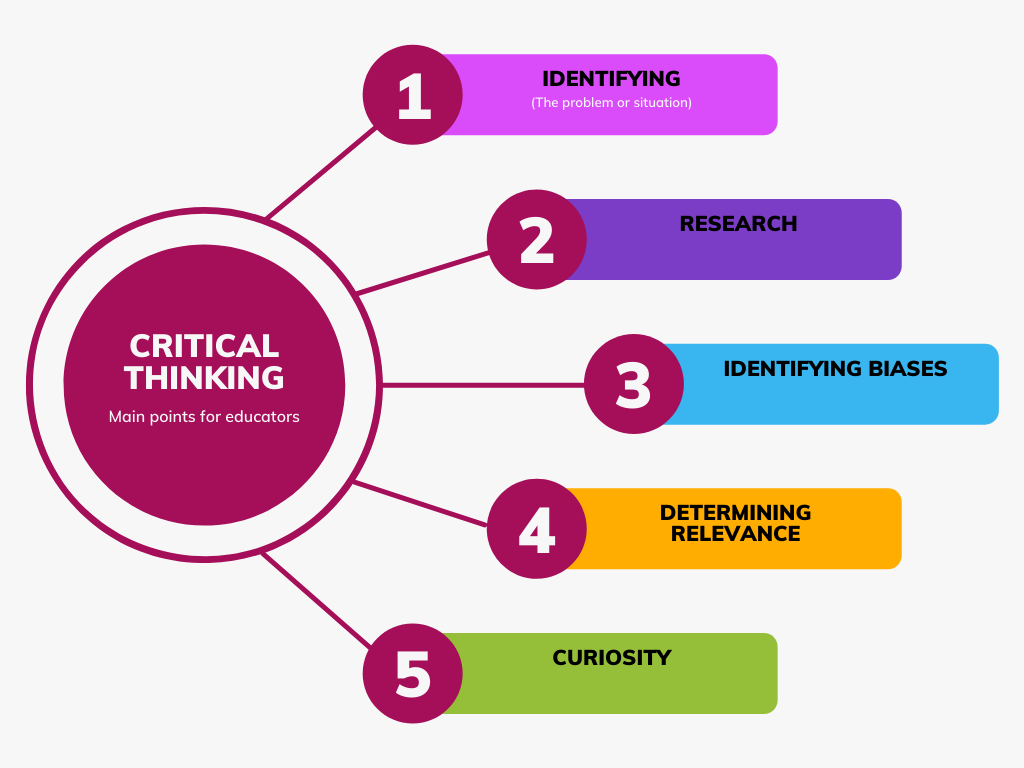Can computational thinking help learners become better problem solvers?
Before we can answer that, let’s unpack Computational Thinking.
“Computational thinking, is a set of problem solving methods that involve expression problems and their solutions in a way that a computer could also execute” – Wikipedia, ret. 2022
This way of thinking involves the automation of processes while also using forms of computing to explore, analyze, and understand processes (natural and artificial). As a result of critical thinking, the students would be exercising their critical thinking skills through active engagement. Important critical thinking skills that are often an area of focus include:

Based off of this information, it is directly in the nature of computational thinking to help students (or people in general) become better problem solving. It aids in step by step processing and working through a situation to a solution.
It does this, by increasing practice on three main points:
- algorithmic thinking (kind of like sequencing)
- Evaluating (make sure the solution actually works)
- Decomposing (break everything down into workable parts)
Reflecting on class time
It was interesting to think about ways that “coding” can be involved into the curriculum in ways extending past math or computer science. It is a subject that made me a little nervous at first but I definitely felt more comfortable after seeing how it can be integrated. It makes things seem less daunting and I feel that this feeling would be a similar one for students. For example, we had a blast from the past today with Flappy Bird! 🐥 It was so much fun to try to code our own version of the game, I really enjoyed it! Here is a quick video of me trying (and failing) at my own version of flappy bird!